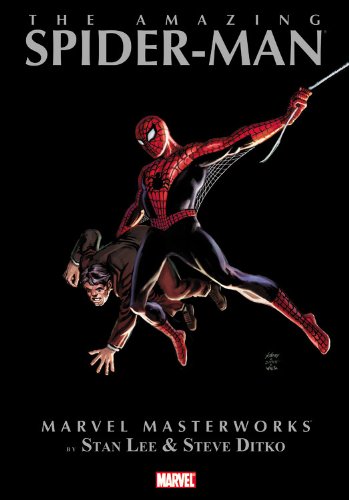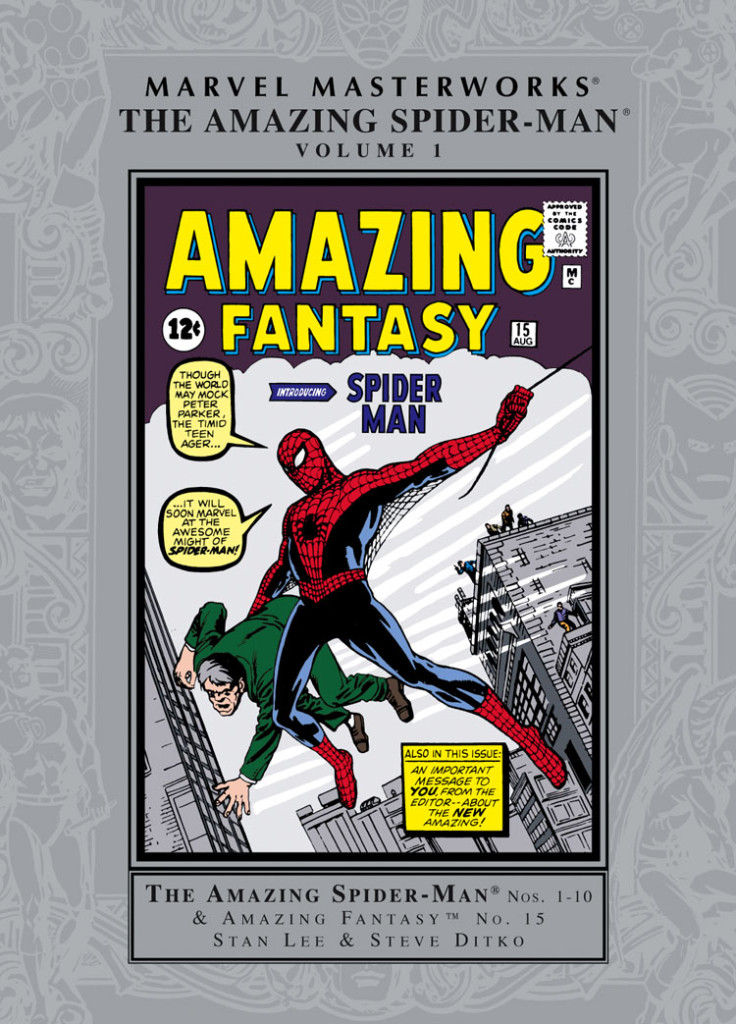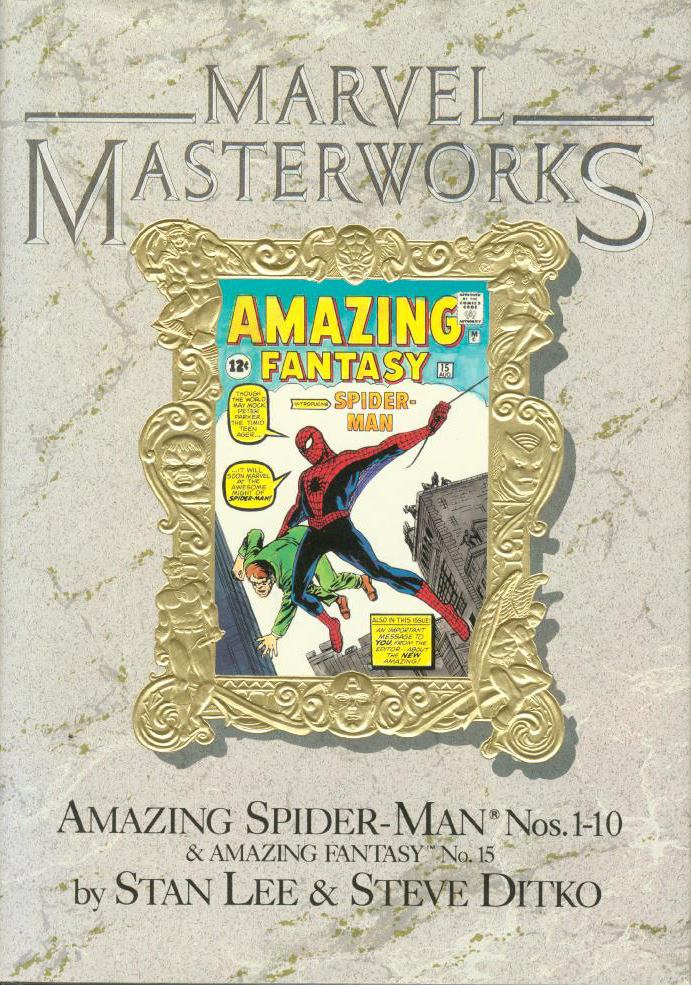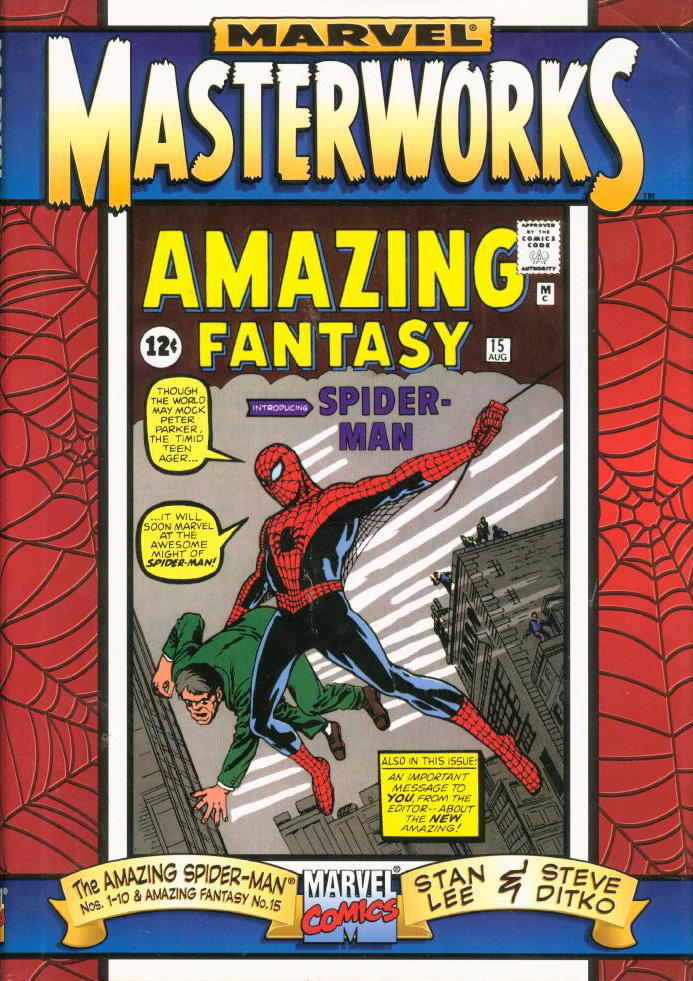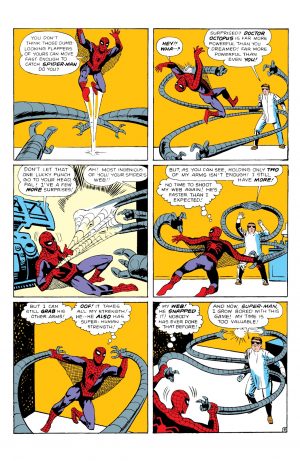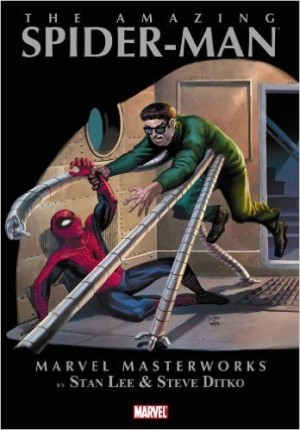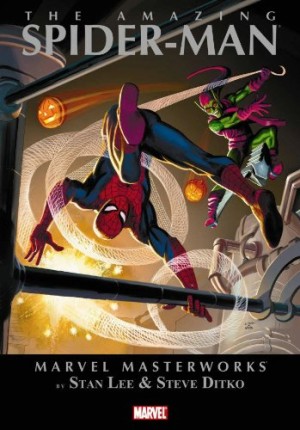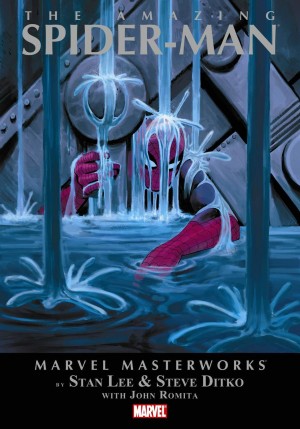Review by Frank Plowright
Spider-Man was the third of Marvel’s 1960s superhero creations, and while it’s arguable that the Fantastic Four and the Hulk, when introduced, had greater ties to Marvel’s monster material than what they’d develop into, Spider-Man sparkled from the off. These earliest issues may seem a little old-fashioned now, but in 1963 this was a quantum leap forward, and it remains the template for most solo superhero comics to this day. The astonishing success of the approach has rendered it commonplace ever since.
Stan Lee’s intent was to write about a hero who lived in the world as it was in the suburbs of New York in 1963. Peter Parker was intended to be ordinary. He’s a skinny, bespectacled high school kid raised by his Aunt and Uncle, tormented and ridiculed by the class jocks, and Spider-Man appears his way out. Lee has related that the comic mimicked the structure of daily radio soap operas, with Parker’s home and school problems intended to be every bit as compelling as his superhero exploits. This was all very novel in 1963, and revolutionised superhero comics.
The eleven page origin sequence is a compact gem, introducing Parker, his family, his school life, his transformation, his hubris and its tragic consequences. Yes, there are dated elements, and Lee loves his words, but the power remains, and much of this is contributed by Steve Ditko. The quirky, off-kilter realism of his depictions, and the deliberately awkward poses of his Spider-Man supply a slight other-worldliness that the feature required. It closes with a classic, and later much used, line of “…with great power there must also come great responsibility.”
Having produced a strong origin story, Lee and Ditko’s focus on Peter Parker’s problems continues to be inventive. Irascible and headstrong newspaper publisher J. Jonah Jameson arrives in the first issue of Spider-Man’s own comic, and Parker exploits Jameson’s hatred of his alter-ego by selling him photographs of Spider-Man. Over an extremely fertile creative period the following issues reprinted here introduce Doctor Octopus, the Vulture, the Sandman, the Lizard and Electro, all still in use today.
That’s not to say everything works. Lee fell back on stock monster comic clichés with the Terrible Tinkerer, a battle with Doctor Doom is misguided, and Ditko’s design for fighting robot the Living Brain hasn’t stood the test of time. What consistently ensures the stories never slip into total mediocrity are the soap opera elements. Only a total curmudgeon is unable to cheer at Parker besting Flash Thompson in the school boxing ring, or Aunt May warning him not to forget his umbrella. Her first heart flutter still retains a genuine tension, and Lee promotes the wise-cracking Spider-Man as Parker’s release from very early on.
The finest story here after the origin is the finale. The featured villains enable Ditko to display Spider-Man’s athleticism at its best, there’s a well-plotted mystery, false clues as to the identity of criminal mastermind the Big Man, and a lot of plot packed into 22 pages.
Lee originally intended Jack Kirby draw Spider-Man, but his dynamic pencils didn’t suit the ordinary world integral to the strip. A brief battle with the Human Torch displays this, despite Kirby’s pencils being swamped by Ditko’s inks.
Be warned that the original colouring was modified for earlier printings, now restored. The content is also available in cheaper format, in black and white on pulp paper as Essential Spider-Man volume 1, or in colour on matt paper as part of Great Power. Ditko’s entire run is collected in an oversize hardback Omnibus edition.
